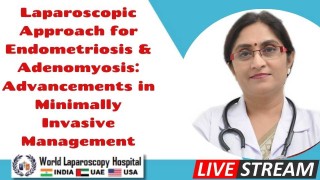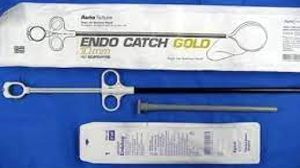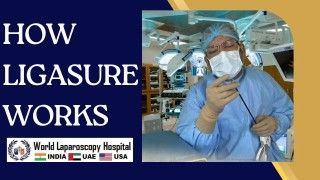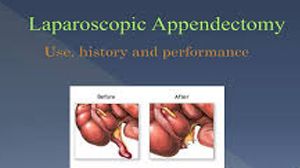Surgical Advances: Laparoscopic Cholecystectomy and Hydatid Cystectomy
Add to
Share
842 views
Report
1 year ago
Description
Surgery has come a long way over the years, with significant advancements in technology and techniques that have revolutionized the field. Laparoscopic cholecystectomy and hydatid cystectomy are two such surgical procedures that have seen remarkable developments, offering patients safer, less invasive, and more effective treatment options. In this article, we will explore these surgical advances in detail. 1. Laparoscopic Cholecystectomy Overview: Laparoscopic cholecystectomy is a minimally invasive surgical procedure designed to remove the gallbladder. It has gained immense popularity since its introduction in the late 1980s, thanks to the numerous advantages it offers over traditional open cholecystectomy. Procedure: The procedure involves making small incisions in the patient's abdomen, typically four, through which a laparoscope (a thin, flexible tube with a camera) and specialized surgical instruments are inserted. The surgeon guides the instruments and removes the gallbladder. Compared to open surgery, laparoscopic cholecystectomy is associated with less pain, a shorter hospital stay, and quicker recovery times. Benefits: Minimized scarring: Laparoscopic cholecystectomy leaves small, almost inconspicuous scars, making it a cosmetic advantage. Reduced post-operative pain: Patients experience less discomfort, as smaller incisions are made. Faster recovery: Most patients can return to their normal activities within a few days to a week. Lower risk of infection: The minimally invasive approach reduces the risk of post-operative infections. 2. Hydatid Cystectomy Overview: Hydatid cystectomy is a surgical procedure specifically designed to treat hydatid cysts, which are caused by the parasitic infection of Echinococcus granulosus. These cysts often develop in the liver or lungs. Procedure: The surgery is performed under general anesthesia. The surgeon opens the affected organ (usually the liver or lung) and carefully removes the hydatid cyst. After cyst removal, the surgical site is thoroughly cleaned to remove any remaining cyst material or daughter cysts. Benefits: Elimination of the parasite: Hydatid cystectomy is the most effective way to completely remove the parasitic cysts from the affected organ. Prevention of complications: By removing the cysts, the procedure helps prevent further growth, rupture, and complications associated with hydatid disease. Symptom relief: Patients often experience significant relief from pain and other symptoms caused by the cysts. Challenges and Considerations: Hydatid cystectomy can be a complex procedure, requiring expertise in handling the parasitic material and minimizing the risk of complications. Depending on the size and location of the cysts, other treatment options such as aspiration, injection, and reaspiration (PAIR) or drug therapy may be considered. Post-operative care and monitoring are crucial to ensure the patient's complete recovery and prevent recurrence. Laparoscopic Cholecystectomy: Laparoscopic cholecystectomy is a groundbreaking approach to removing the gallbladder. The procedure, which has rapidly gained prominence since its inception in the late 1980s, employs a minimally invasive methodology, drastically enhancing the patient experience. During this procedure, small incisions are made in the abdomen through which a laparoscope and specialized instruments are inserted. This minimizes scarring, post-operative pain, and recovery times. Patients often return to their daily routines with impressive speed, making it a preferred choice for those suffering from gallbladder-related issues. Hydatid Cystectomy: Hydatid cystectomy, on the other hand, is a surgical solution meticulously crafted to tackle hydatid cysts, a condition resulting from a parasitic infection by Echinococcus granulosus. These cysts tend to inhabit the liver or lungs, causing discomfort and serious complications. The procedure is performed under general anesthesia, requiring the surgeon to delicately excise the cysts from the affected organ. This surgical intervention ensures the complete removal of the parasitic material, offers relief from symptoms, and prevents further growth or rupture of the cysts, ultimately improving the patient's quality of life. Nonetheless, the road to recovery and the choice of the most suitable surgical approach hinge on numerous factors. Patients must work closely with their healthcare providers to evaluate their unique condition, overall health, and surgical options, ensuring they receive the most appropriate treatment. Conclusion: Surgical advances like laparoscopic cholecystectomy and hydatid cystectomy have significantly improved the outcomes for patients in need of these procedures. These techniques not only reduce the physical trauma associated with surgery but also lead to faster recovery and improved patient satisfaction. However, it's important to note that the success of any surgical procedure depends on various factors, including the patient's overall health, the surgeon's expertise, and careful post-operative care. Patients should consult with their healthcare providers to determine the most appropriate surgical approach for their specific condition.
Similar Videos






